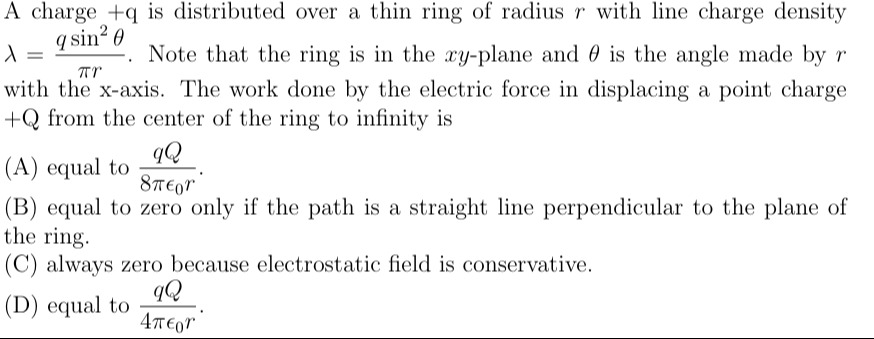Question
Question: A charge +q is distributed over a thin ring of radius r with line charge density $\lambda = \frac{q...
A charge +q is distributed over a thin ring of radius r with line charge density
λ=πrqsin2θ. Note that the ring is in the xy-plane and θ is the angle made by r with the x-axis. The work done by the electric force in displacing a point charge +Q from the center of the ring to infinity is

equal to 8πϵ0rqQ.
equal to zero only if the path is a straight line perpendicular to the plane of the ring.
always zero because electrostatic field is conservative.
equal to 4πϵ0rqQ.
equal to 4πϵ0rqQ.
Solution
The work done by the electric force is W=Q(Vinitial−Vfinal). Here, the initial point is the center of the ring, and the final point is infinity. So, W=Q(Vcenter−V∞). Since V∞=0, W=QVcenter.
For any charge distribution, the potential at a point is given by V=∫4πϵ0Rdq, where R is the distance from dq to the point.
At the center of the ring, every charge element dq is at a distance r from the center. Thus, the potential at the center is Vcenter=∫4πϵ0rdq=4πϵ0r1∫dq.
The integral ∫dq represents the total charge on the ring, which is given as q.
Therefore, Vcenter=4πϵ0rq.
The work done is W=QVcenter=Q(4πϵ0rq)=4πϵ0rqQ.
